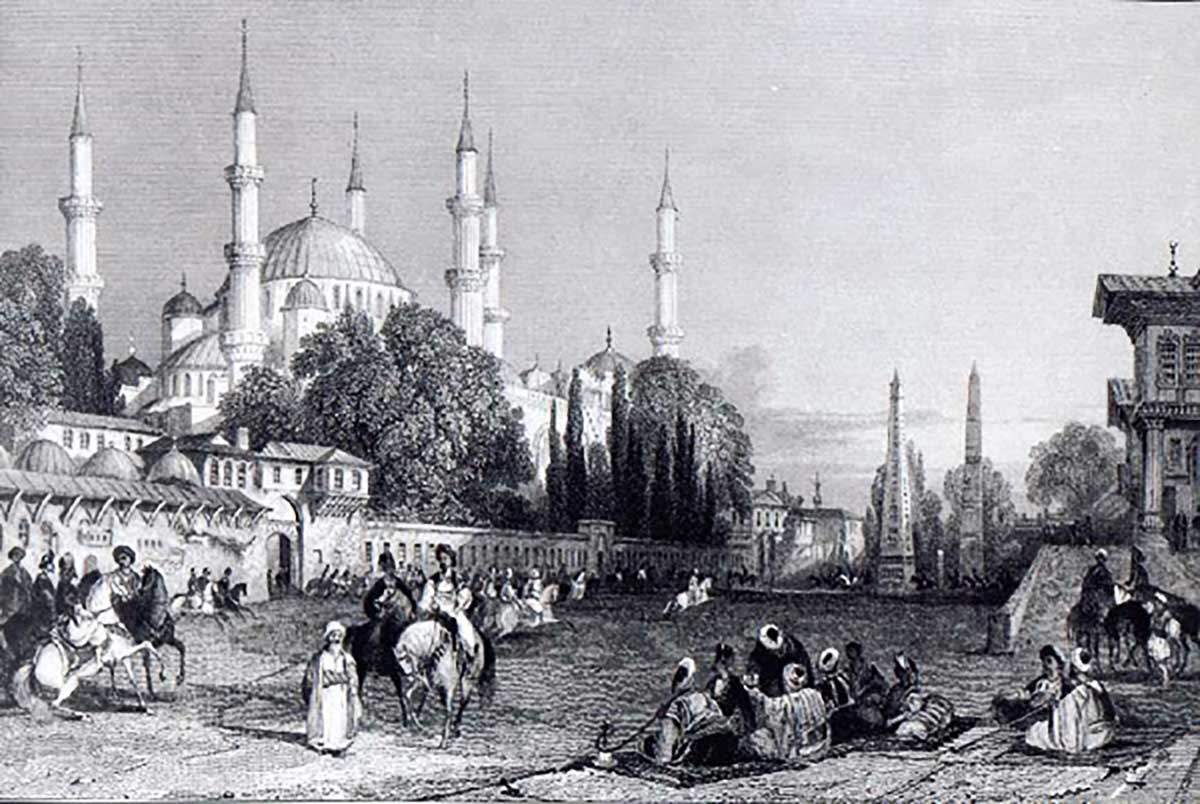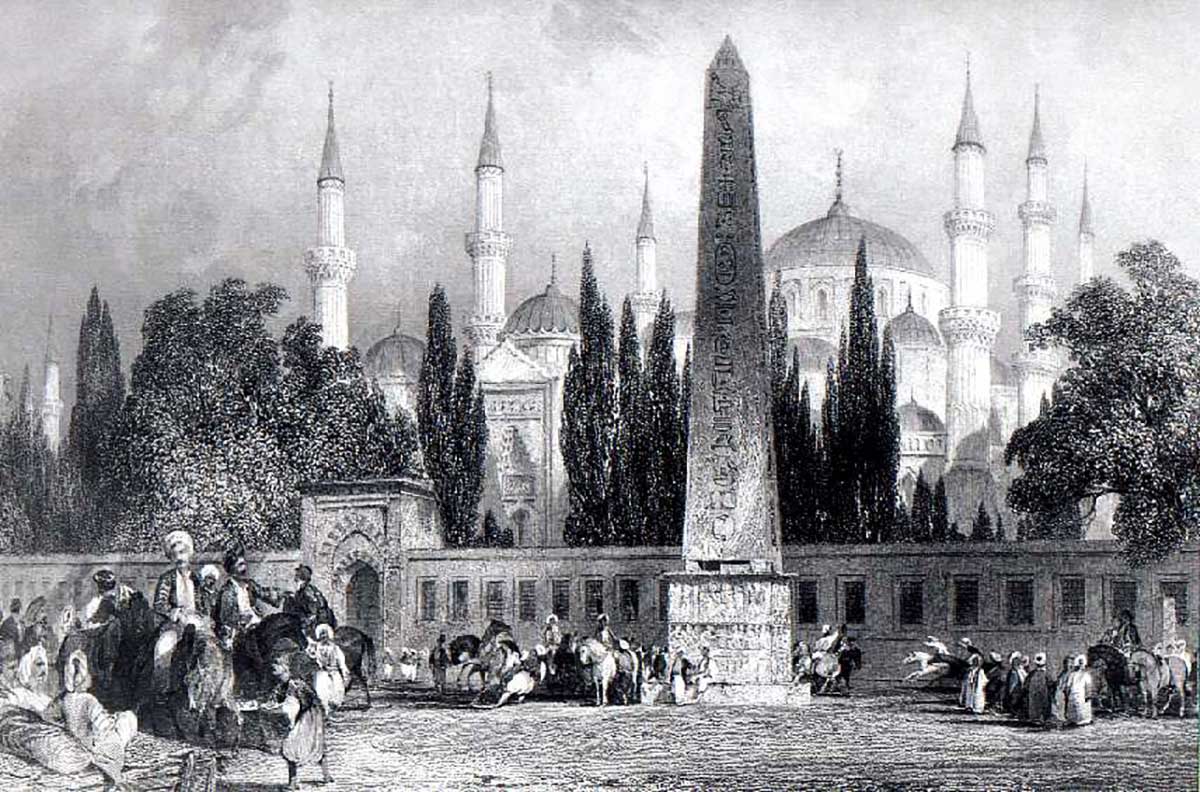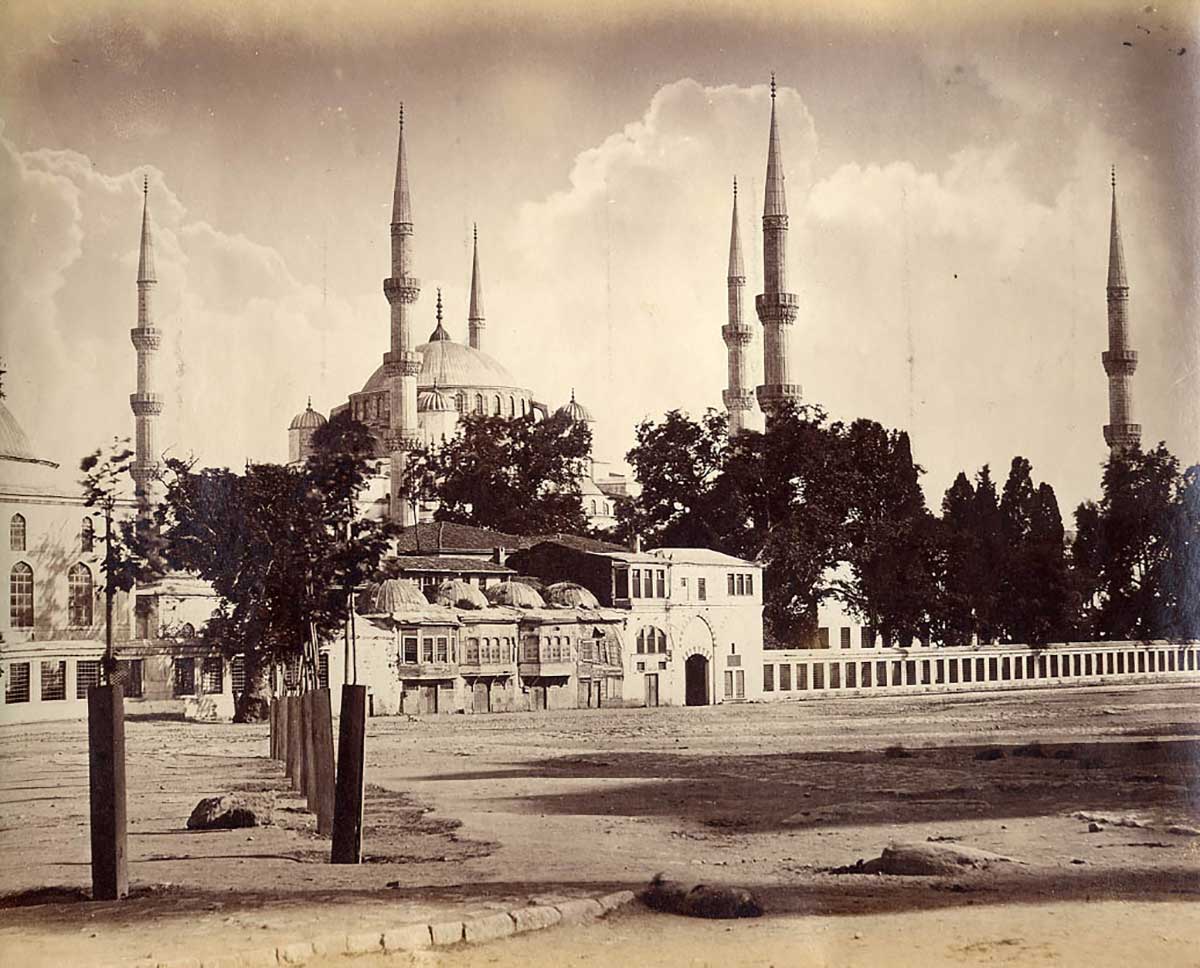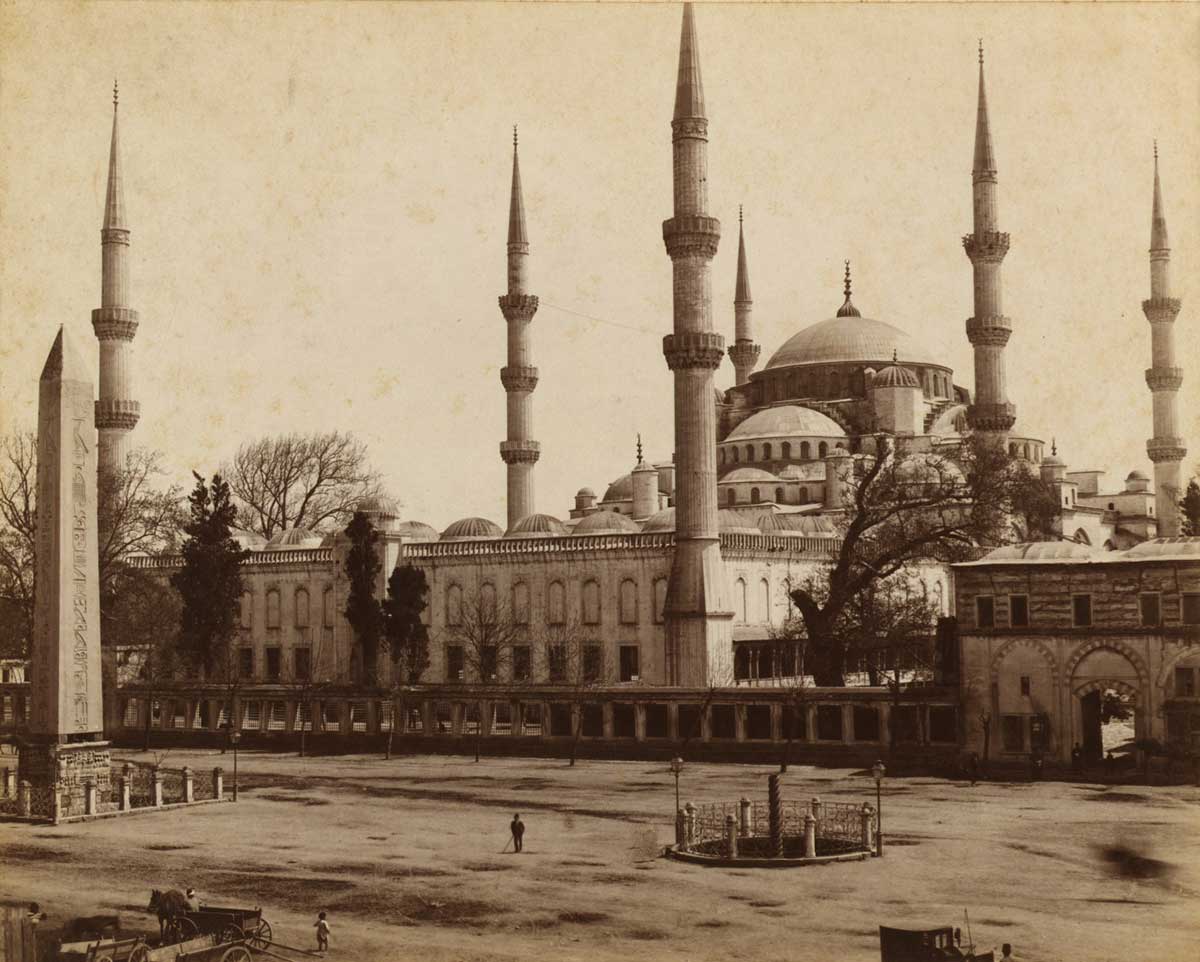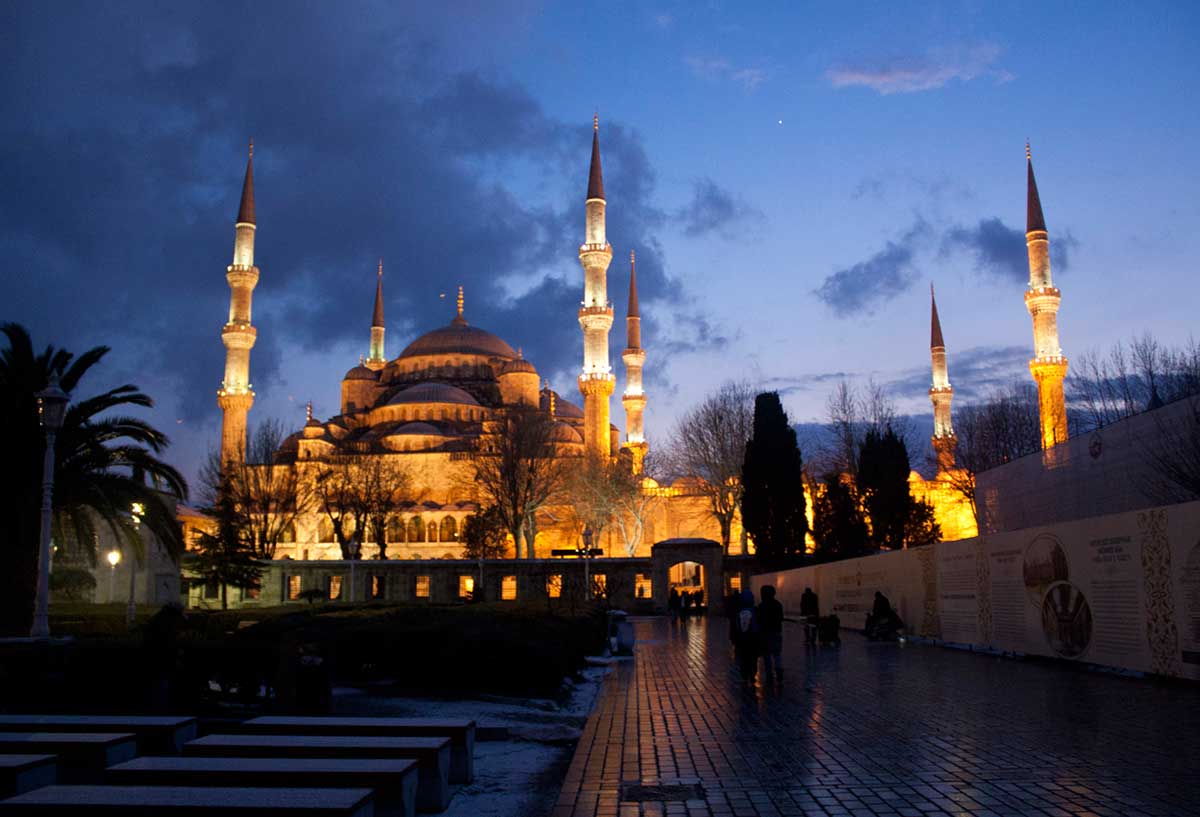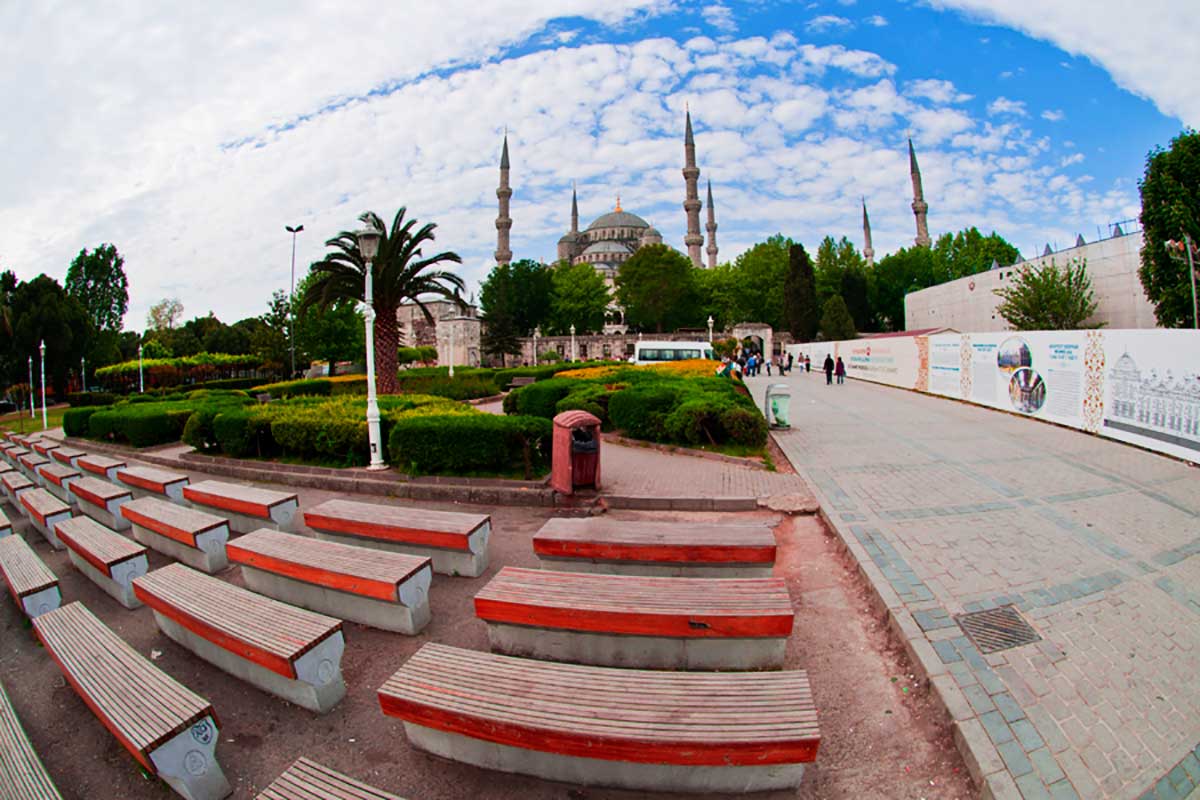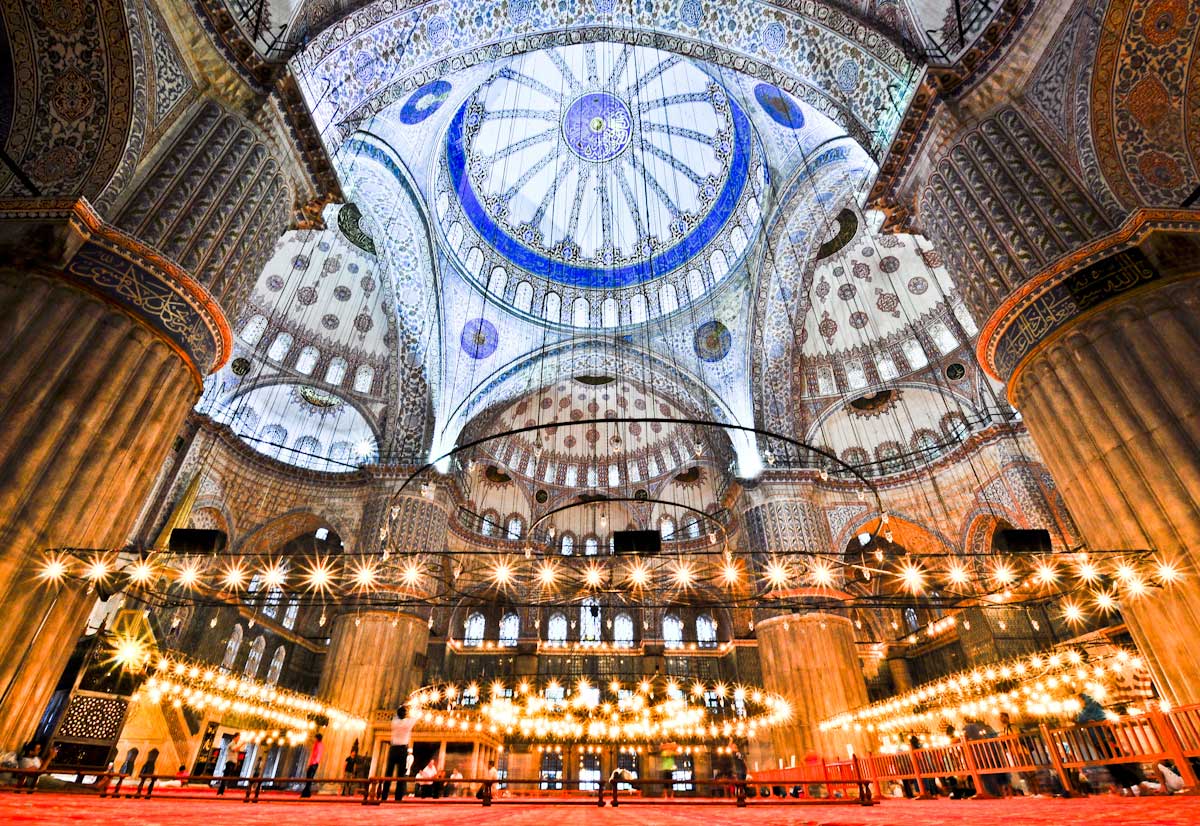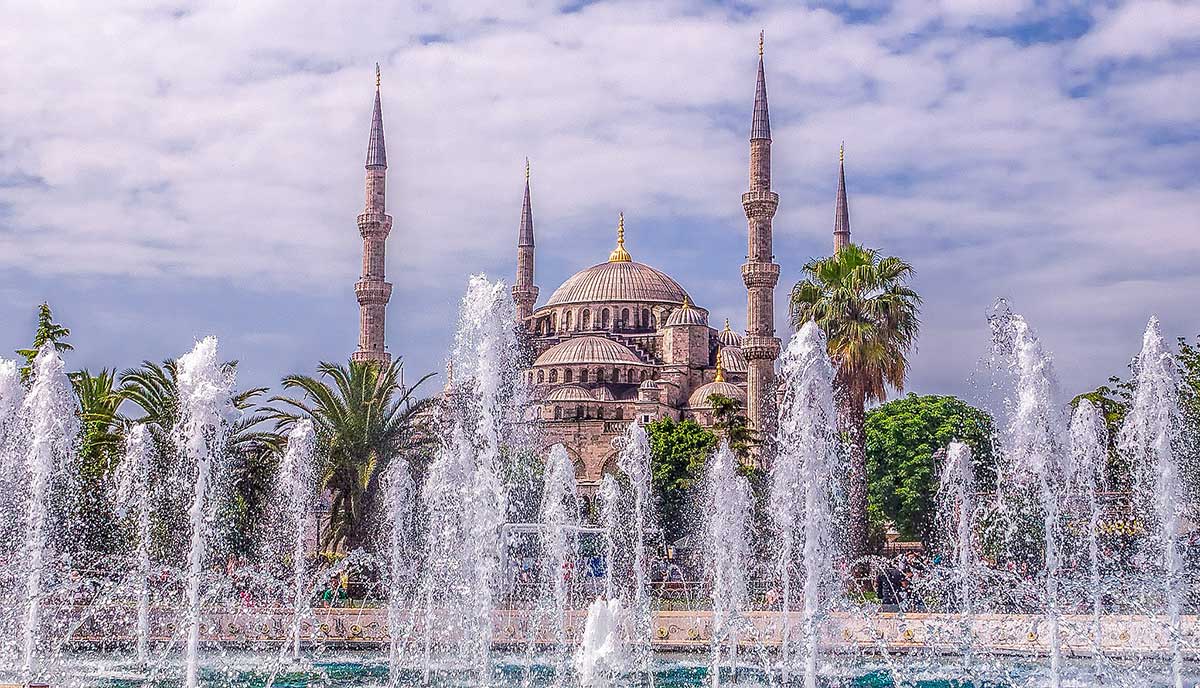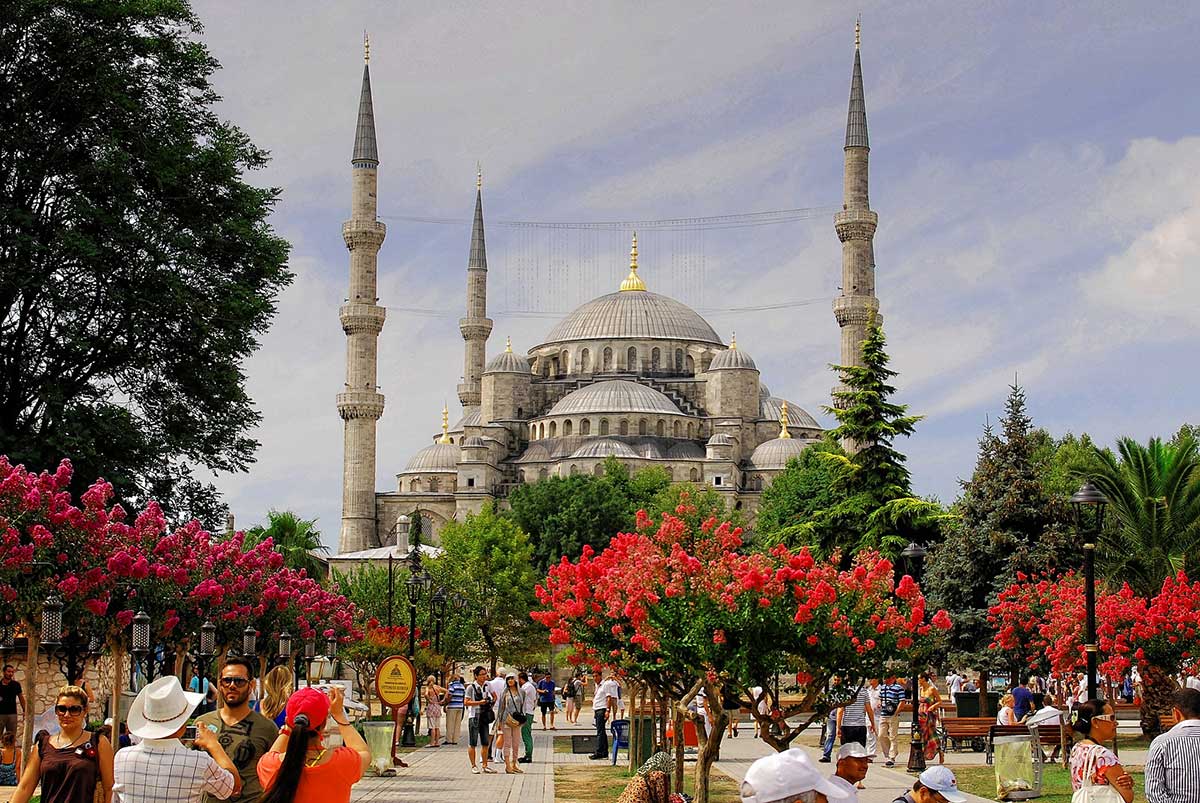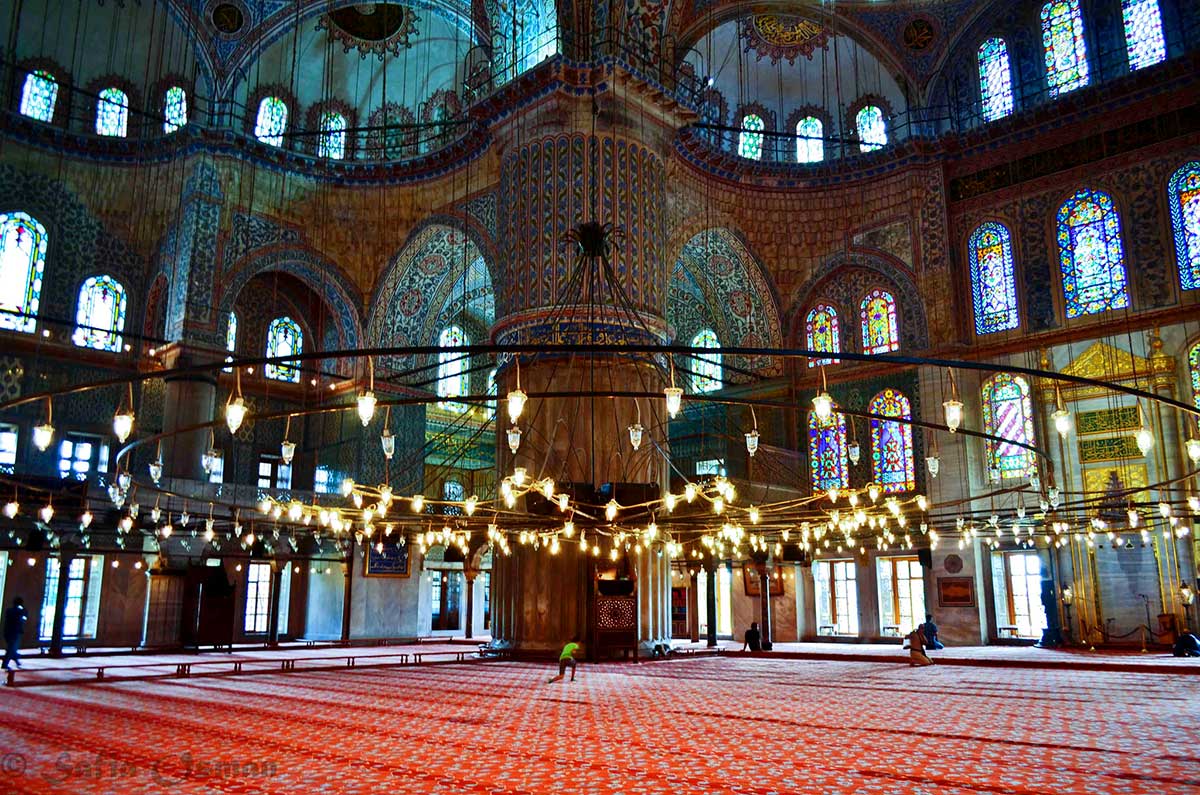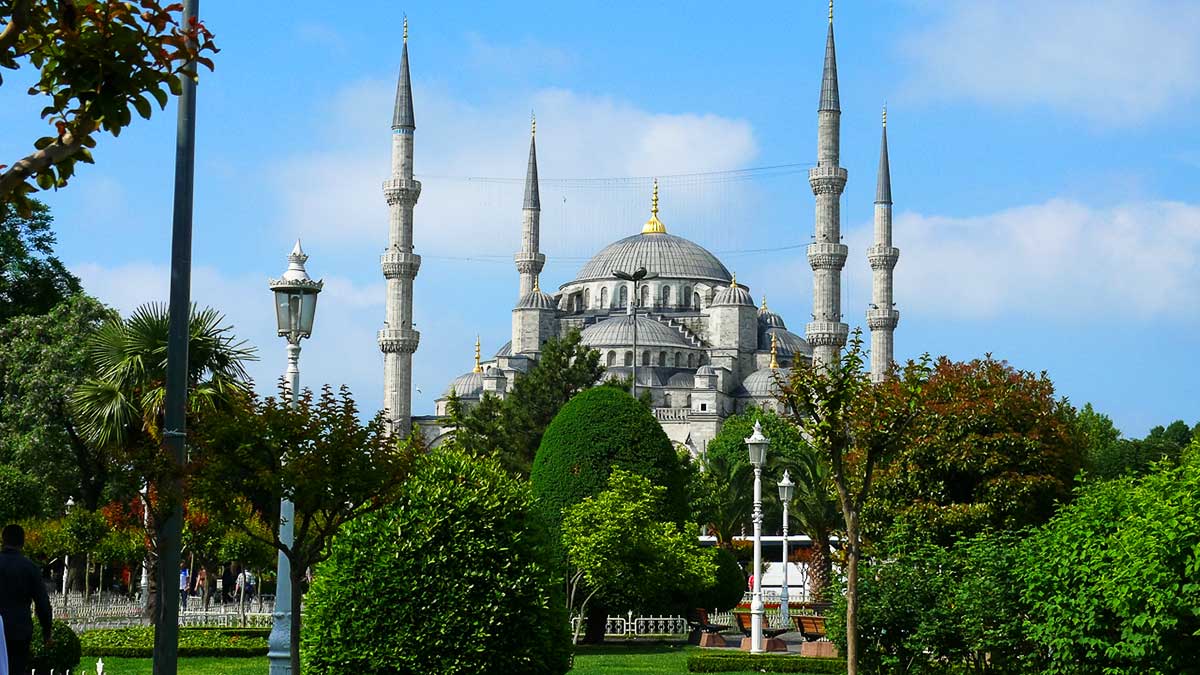Istanbul’s Sultan Ahmet Mosque has never been called by the Turks as “the Blue Mosque” but it is known as the Blue Mosque by many tourists because of the blue tiles adorns the interior and gives the building its unofficial name. The interior of the mosque is lined with more than 20,000 handmade ceramic tiles, which were produced in İznik (historic Nicaea), and represent the cultural and artistic zenith of the Ottoman Empire.
When Sultan Ahmed I initiated the construction of the mosque, he was only 19 years old. His decision provoked the anger of Ottoman scholars and statesmen as well as Ottoman population who thought Sultan Ahmed had no right to build a mosque. That was because Ottoman sultans had always paid for their mosque with their war booty but Sultan Ahmed I had to use the money from treasury because his fights against Habsburg Monarchy and Persia resulted in humiliation.
Nevertheless, the construction of the mosque began in 1609 on the site of the palace of the Byzantine emperors, facing the Hagia Sophia and the hippodrome, a site of great symbolic significance. According to the document found in the library of the Topkapı Palace, the opening ceremonies were held in 1617. Sultan Ahmed I, had a chance to pray inside of his mosque but died only a few months later and was buried just outside of the mosque.
Sultan Ahmed wanted to build such a great mosque because he wanted to emphasise that he was a pious ruler of the Ottoman dynasty like his great grandfathers had been. He is said to have shown his commitment to the construction of the mosque by personally working as a labourer on the first day of the construction (the equipment he used for the construction are said to be housed in the Topkapı Palace). He also visited the construction site at every opportunity and spent hours watching the erection of the mosque that would crown his efforts to imitate Suleiman the Magnificent. According to registers of construction expenses, the total cost of the construction of Sultan Ahmet Mosque was over 180 million akçes.
The architect of the Blue Mosque was Sedefkâr Mehmed Ağa, who became chief imperial architect to the Ottoman court in 1606, and was the last student of Architect Sinan, Turkey’s most celebrated architect. He was a master-builder under the supervision of Great Architect Sinan for 21 years. The Blue Mosque is considered to be his masterpiece work. The design of the mosque was a blend of the style of Hagia Sophia and the works of his master Architect Sinan. After the construction the mosque was completed, Mehmed Ağa died in 1617 at about the same time as his sultan.
The Blue Mosque became famous for its six minarets, accompanied by one large dome and eight smaller domes. However, the six minarets stirred concern among the people as the holy Mecca Mosque (Al-Masjid al-Haram), which was the holiest in the Muslim world, had also the same number of minarets. To resolve the problem, the seventh minaret was ordered to be added to the Harem Mosque.
The Ottoman Turks didn’t limit their mosques only to a place of worship but rather a large complex of buildings with various social aims. The Sultan Ahmet Mosque also included madrasah (a higher educational institution), a hospital, an imaret (a soup kitchen), a primary school, a market (bazaar) and a tomb for the members of the royal family. There was also a room called ‘Muvakkithane’ (time house) where the astronomers made calculations of the times of prayer and other important occasions in the Muslim calendar. Many of these buildings were later torn down in the nineteenth century.
The most important characteristic of the Sultan Ahmet Mosque that attracts everyone passing from İstanbul is definitely it’s six minarets as most mosques have four, two or just one minaret. The Blue Mosque is the only mosque with 6 minarets in Istanbul. However, Turkey hosts two other mosques with six minarets. One of them is Hz. Mikdat Mosque in Mersin city and the other one is Sabancı Merkez Mosque in Adana city.
Two of the minarets are located at the east and west corners of the courtyard, while the other four pencil-shaped minarets are located at the four corners of the mosque. The minarets in the Ottoman Architecture are usually plain, but the bodies of the minarets are decorated to be different from each other in this structure, going beyond the conventional approach. The minarets that located at the four corners have three balconies, while the other two have two balconies.
There are many stories on the conspicuousness of the mosque with six minarets. The best known of these rumours is that Sultan Ahmet actually wanted the minarets made from gold, but Sedefkâr Mehmed Ağa who did not have sufficient allowance decided to play a prank in order to disregard the request which was too expensive and complained of severe hearing to build six (altı in Turkish) minarets instead of a golden (altın in Turkish) minaret.
The Blue Mosque’s interior is lit by two hundred and sixty windows. Once, they were filled with stained glass of the seventeenth century, but they were lost and replaced with replicas. Thanks to its windows, the Blue Mosque receives much more sunlight comparing to other mosques built by sultans. The many lamps inside the Blue Mosque were once covered with gold and gems as well. However, they have been lost or pillaged for museums in Istanbul.
The most important innovation that the architect Sedefkâr Mehmed Ağa brought was the use of a Sultan’s pavilion. In this mosque complex, the Sultan’s pavilion (Kasr-ı Humayun) is located at the southeast corner of the mosque. Sultan used this pavilion as a resting place before and after the prayer. There are Sultan’s rooms at the upper floor and the sections for premises and career are on the lower floor of the pavilion.
When the believers hear the call to prayer from the minarets, they perform their ablutions (washing) and then pray. Although it is one of Istanbul’s most popular sights, it is still a working mosque, and is therefore closes for 90 minutes to tourists at each pray time. According to statements of İshak Kızılaslan, Imam of the Blue Mosque, around 20,000 people can worship at the mosque at the same time.
Many heads of states visit here along with Hagia Sophia when they come to Turkey. Pope Benedict XVI and Pope Francis and US President Barack Obama were among them. When the Pope Benedict XVI entered the mosque, he paused for a few minutes, closing his eyes in silent meditation.
The Historical Areas of Istanbul, situated on a peninsula surrounded by the Sea of Marmara, Bosphorus, and Golden Horn, were placed on the UNESCO World Heritage List in 1985. The masterpieces of Istanbul include the Blue Mosque and the Topkapı Palace are in the Heritage list under the Historical areas in Istanbul.

